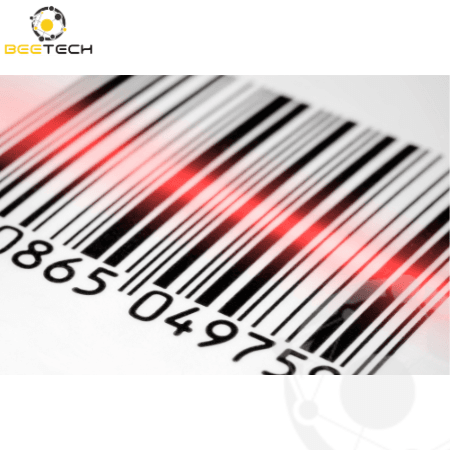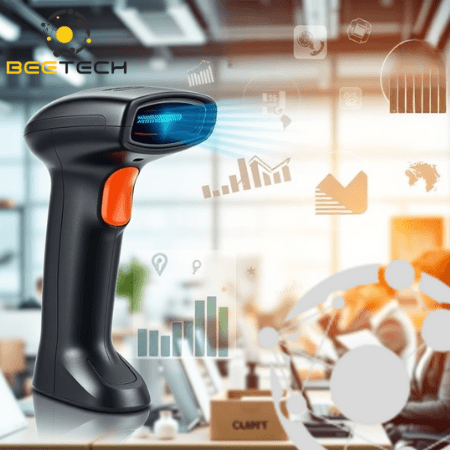80-82 Cao Duc Lan, District 2, HCMC, Vietnam
+84 76 865 6688
info@beetech.com.vn
+84 76 865 6688
About us
Contact us
80-82 Cao Duc Lan, District 2, HCMC, Vietnam
+84 76 865 6688
info@beetech.com.vn
+84 76 865 6688
About us
Contact us

Choosing the optimal barcode technology for inventory management systems
In today’s business world, the ability to accurately and efficiently track every item is critical. An inventory management system is not merely about counting it’s the core mechanism for managing, accounting, and locating physical goods. When this system runs smoothly, businesses can minimize costs caused by overstocking or shortages, both of which can lead to lost revenue and diminished reputation.
Almost every industry relies on barcode technology from massive warehouses and retail chains to 3PL logistics providers, hospitals, and complex manufacturing facilities.
Barcodes serve as the universal language of inventory systems, eliminating errors caused by manual data entry. They help businesses forecast demand accurately, optimize storage, and ensure products are always available when customers need them creating a more agile and resilient supply chain.

An effective inventory system is a seamless chain, requiring each component to deliver high performance, durability, and scalability.

This is the “brain” that collects, stores, processes, and reports data. A modern WMS should include cycle counting features, intuitive dashboards, and flexible API integration with ERP (enterprise resource planning) systems. Without an efficient software backbone, all collected barcode data becomes meaningless.
To capture data anywhere, you need rugged mobile devices or industrial scanners designed to withstand harsh conditions such as impact, dust, or moisture. Hardware durability (IP rating) is essential to maximize warehouse staff productivity during barcode scanning.
A strong and stable wireless network is crucial to ensure all barcode scans are captured instantly and in real time. In large warehouse environments, implementing a mesh network is necessary to eliminate dead zones and prevent data interruptions.
Barcode quality depends on print quality. You need an industrial-grade barcode printer capable of producing crisp labels on materials suitable for the environment (e.g., heat-resistant or waterproof labels). Poorly printed barcodes can cause scanning errors and slow down the entire workflow.
Barcode scanners must suit the physical environment. More importantly, the decoding software inside the scanner determines the speed and accuracy of data collection.
Many businesses fail at the very first step choosing the right barcode type. Understanding each technology’s characteristics is essential for making the right decision.
These familiar black-and-white stripes store data horizontally. They’re simple, fast to scan, and typically contain limited data (e.g., product codes).
Advantages: Low cost, easy to print, high-speed scanning even with basic laser scanners.
Limitations: Easily damaged, low data capacity, unsuitable for complex traceability.
2D barcodes (e.g., QR code, Data Matrix) store data both horizontally and vertically, accommodating thousands of characters including batch numbers, expiry dates, and serial numbers.
Advantages: High data capacity, error correction up to 30%, allowing accurate decoding even when damaged critical in manufacturing environments.
Limitations: Require imaging scanners (imagers) and higher initial hardware costs.
RFID is an advanced inventory-tracking solution that uses radio waves to communicate with tags attached to items no line of sight required. There are three main RFID types, with passive tags being most common for retail and asset tracking.
Key differences:
No line of sight: RFID tags can be read through packaging.
Bulk scanning: A single reader can scan hundreds of tags simultaneously (e.g., an entire pallet).
Advantages: Ultra-fast inventory checks, near-perfect accuracy, ideal for large-scale logistics and warehousing.
Limitations: Higher tag cost, more complex antenna and reader infrastructure.
A step-by-step approach to ensure you never regret your identification technology decision.
What information do you need to store on your barcode SKU, batch number, expiry date, or serial number? In industries like pharmaceuticals or food, 2D barcodes are mandatory for full traceability. Business objectives will determine whether you prioritize scan speed or bulk scanning capability (RFID).
Where will your labels be applied? In dry environments, paper labels may suffice; in harsh conditions (cold storage, chemicals), polyester or vinyl labels are required. Label durability directly affects scanning efficiency. Consider 2D barcodes (for error correction) or RFID tags (for better protection).
Speed equals money. For small-scale, item-by-item scanning, 1D or 2D barcodes are ideal. For bulk or pallet scanning, RFID is the only viable solution. Transitioning from barcodes to RFID becomes essential when handling thousands of items per hour.
Hardware must align with your chosen technology but the real intelligence lies in the decoding software. It should handle multiple symbologies, read damaged or misaligned barcodes, and allow flexible data capture rules.
TCO determines long-term sustainability. Consider hardware/software costs, consumables (barcode labels vs. RFID tags), integration expenses, and labor. RFID’s bulk-scanning ability often offsets higher initial costs by saving significant labor time annually.
Selecting the right technology is only half the battle choosing the right solution provider is equally critical. A reliable partner helps you choose the right barcode type, test label performance (proof of concept), and provide technical and asset management support. This ensures your system operates smoothly without disruption.
When implementing an inventory management system, choosing the right barcode technology is a strategic decision. Start by defining your data and environmental requirements clearly. Look beyond initial costs evaluate total cost of ownership and scalability.
Take the time to determine whether 1D, 2D, or RFID best fits your needs. Then ensure your scanner and software fully leverage that technology’s capabilities. A well-designed system forms the foundation for your company’s sustainable growth.
Contact Beetech today for detailed consultation.
📧 Email: info@beetech.com.vn
🌐 Website: https://beetech.com.vn

See more products: Here


Barcode Technology in the Digital Age: Types, Advantages, Limitations, and How Businesses Can Choose the Right One
18/11/2025 04:12:49

5 Barcode Secrets That Smart Businesses in Vietnam Are Using to Boost Logistics Efficiency
12/11/2025 08:00:46

GS1 US adopts 2D barcodes and intelligent data capture – Advancing toward a transparent and modern supply chain
07/11/2025 06:33:27

Barcode Technology: The Classic Tool Evolving for a Digital Supply Chain Era
06/11/2025 03:37:29

Barcode – An efficient and cost-effective asset management solution for modern businesses
05/11/2025 04:20:46

The future of barcode scanning technology: Key trends and practical applications in the digital era
31/10/2025 04:21:05